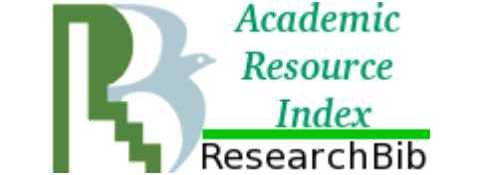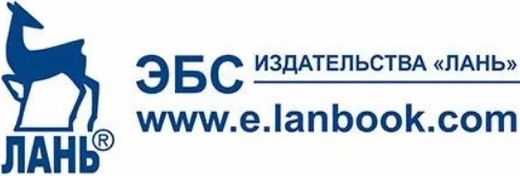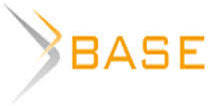TRENDS IN THE DEVELOPMENT OF DIGITAL MARKETING IN THE BANKING MARKET
Abstract
In the context of ever-increasing competition in the domestic banking market, one of the most important conditions for the development of the banking business is the effectiveness of marketing activities. Digital transformation and the development of information technologies are rapidly changing not only the structure of the market, but also the methods of promoting banking products and services towards the development of digital marketing. This concept involves the use of advanced computer and network technologies to search for new markets and new consumers via the Internet, providing opportunities to improve financial indicators and the efficiency of the bank as a whole. The purpose of the study is to identify the main trends in the development of digital marketing in the banking services market. The article considers the stages of Internet banking development as a promising direction of banking marketing.
The authors provide an analysis of the rating of the best mobile banks in four key areas: the capabilities and functionality of applications, promotion in Digital, ASO, adaptation to innovations. The main technologies for the development of digital marketing in the banking services market in Russia were systematized and identified, indicators of changes in digital instruments and budget funds of banks for the development of digital marketing technologies in the financial sector were analyzed. In conclusion, the authors identified the directions of transformation of marketing activities of banks in the market of banking products and services in Russia and the possibilities of their development in the coming years.
Keywords: : banking marketing, digital marketing, digital marketing, banking products and services market, digitalization, financial technology, Internet banking
Introduction
At the present stage of economic development, it is difficult to imagine a successfully functioning organization that does not carry out marketing activities. Today, most banks are actively using digital technology to interact with real and potential customers and thus provide the necessary information gathering. One of the targeted and interactive ways to promote banking products and services on the market is digital marketing. Application of digital marketing technologies allows to attract more new customers, promote your own brand in the market of banking services, to maintain stable positions among the target audience and, ultimately, to maximize profits.
Today we can not imagine the work of the bank, without the latest systems of digital marketing and Internet banking, which in recent years have become not only the most popular, but also the cheapest way to provide banking services. Hence the relevance of the topic of application of digital technology in the methods of management of intra-bank marketing, in accordance with modern trends in the market of banking services.
Mainpart
The banking industry has undergone significant changes with the advent of Internet banking. The functionality of the bank is no longer limited to standard branches that you need to visit in person to conduct cash withdrawal operations, request a check, receive statements, open deposits, or transfer funds. Modern Internet banking allows you to process any requests and transactions online, without a physical visit to the bank office, at any time [Vasiliev I.I., Bukina D.A., 2020].
Based on the facts of the history of the development of digital technology in the banking sector, banking industry experts identify five main stages in the development of Internet banking (Figure 1).
Internet banking has many advantages, the main of which are the simplification of working with customer data arrays and the convenience of working with their accounts. Almost all digital innovations in the banking services market find a positive response from users. However, with the advent of technology, the top managers of the bank also have new responsibilities to constantly monitor trends in the digital services market, develop new ideas, attract new customers, and retain old ones. We can assume that over time the need for digital technology will only increase, and the physical branches of banks will lose their relevance in favor of mobile applications and websites.
Therefore, digital technology is a powerful and useful tool for providing banking services. The popularity of technology is growing, and the introduction of digital marketing is already becoming a necessity, and not just a pleasant service for customers.
The main trends in the development of digital marketing in the market of banking services in Russia are presented in Figure 2.
A real breakthrough in the digital marketing of the banking sector was the creation of mobile banking. Today, this technology is becoming more and more functional, rapidly developing. This fact is associated with great popularity among users-customers of banks.
Simplification of customer experience (UX – user experience) involves the development of functions for voice and virtual assistants, the possibility of delivering bank cards to client’s home.
In addition, the Faster Payments System (FPS) is actively developing. Since October 2021, the largest banks have provided customers with mandatory access to pay for goods and services using QR codes in the FPS.
The development of superapps or, in other words, ecosystems, which involve banks providing more than just banking services, has become a new concept that is increasingly found in the banking market. Currently, only Sberbank and Tinkoff Bank have launched a complete system of superapps.
Another promising area for the development of marketing activities is family banking. Today, none of the Russian banks can position itself as a family bank, the only available service for families now is the possibility of issuing separate cards for children [Research of mobile banking applications in Russia 2019-2022, 2022]. For example, Tinkoff Bank offers a Tinkoff Junior card designed specifically for kids. It allows the child to independently make purchases, withdraw cash from ATMs or simply save money, while the card is linked to the parent's account, which allows parent to control the child's expenses, top up the card or set limits at any time. Sberbank also issues cards for children aged from 6 to 13 years old. In addition to the card, the bank has developed the SberKids mobile application, which teaches children how to handle money, control their expenses and save money. A similar product is also presented by Alfa-Bank, VTB Bank, Raiffeisenbank and Gazprombank [Bank cards for a child and teenagers, 2022].
As for increasing the functionality of applications, the independent mobile marketing agency “Go Mobile” has been conducting research on the mobile banking market over the past five years. The study is conducted in four key areas, which are the capabilities and functionality of applications, digital promotion, App Store Optimization (ASO), adaptation to innovations (Table 1).
Таблица 1
Рейтинг лучших мобильных банков в 2020-2022 гг.
Table 1
Rating of the best mobile banks in 2020-2022
Name of the bank | Capabilities and functionality of applications | Digital promotion | ASO | Adaptation to innovations | Total points |
2022 | |||||
Tinkoff Bank | 14.62 | 23 | 10 | 6 | 53.62 |
Raiffeisenbank | 13.16 | 18.2 | 9.4 | 5 | 45.76 |
Sberbank | 13.9 | 22.6 | 2 | 7 | 45.50 |
2021 | |||||
Sberbank | 20 | 25 | 5 | 20 | 70 |
Tinkoff Bank | 21 | 22.9 | 4.5 | 20 | 68.4 |
Raiffeisenbank | 16 | 23.8 | 4.7 | 20 | 64.5 |
2020 | |||||
Sberbank | 17 | 24.5 | 4.7 | 20 | 66.2 |
Tinkoff Bank | 16 | 21.4 | 4.7 | 20 | 62.1 |
Alfa-Bank | 17 | 22.5 | 3.7 | 15 | 58.2 |
Source: compiled by authors according to [Research of mobile banking applications in Russia 2019-2022, 2022]
According to the results of the study, we can conclude that in 2022, Tinkoff Bank is the leader and an example that overturns the standard idea of banks. It is a representative of one of the best digital marketing systems, he has created an effectively functioning system of communications with clients, in the complete absence of physical offices. All the work of the bank is represented by the widest range of possibilities of the website and mobile application. All physical contact with customers is limited to courier delivery of plastic cards to designated addresses, otherwise all communications take place online [Tinkoff Bank official website, 2022].
Another progressive step towards the introduction of digital marketing technologies into the activities of banks has been the development of technical support for banks. Chatbots have gained immense popularity, which give the possibility of automating responses and removing some of the burden from operating offices and already familiar call centers. Consumers can get answers to questions and solve certain problems in much less time. An example of one of the modern communication methods is the SberKot bot developed by Sberbank. SberKot gained popularity in the social network VKontakte, where it successfully communicates with the target audience. The functionality of the bot is constantly updated, with its help the bank informs its customers about new services [The official website of Sberbank, 2022].
Another important digital marketing tool is SMM (Social Media Marketing), that is, the use of social networking platforms for advertising, promotion and building up the target audience. ocial networking is a necessity for maintaining the company’s image, this also applies to banks as well. Information and content delivered through such a communication channel reflects the position of the bank, its scale. This is a convenient channel for receiving reviews and feedback from bank customers. Working with such reviews increases the level of loyalty of the target audience [Razumova K.S., 2022].
The crisis of 2022 has had a great impact on the marketing activity of the Russian banking market. More than twenty largest banks are under sanctions. The volatility of the exchange rate, fluctuations in the key rate of the Central Bank of the Russian Federation, a sharp increase in demand and other factors of uncertainty have played their role. The state of instability does not allow building long-term forecasts for the financial sector. Given the losses of banks in the first half of 2022 in the amount of more than 1.5 trillion rub., experts predict unprofitable results of the year. Thus, if at the beginning of the year the key task of banks was the struggle to expand the audience and attract customers, now it is about maintaining the current positions [Losses of Russian banks in the first half of the year amounted to 1.5 trillion rubles, 2022].
The key point is the transition of banks to marketing technology of native integration, which is a modern type of progressive advertising. By the end of 2022, it occupies a share of 5.6% of all digital tools used in the financial segment of Russia. The objectives of this area are to expand the reach of the audience, to form a loyal customer relationship, to present new products and realize activity on SEO-platforms. After mastering this stage, it is planned to go beyond Internet banking and implement sales of banking products on external platforms.
The main share among digital tools is contextual advertising, accounting for 22.5% at the end of 2022, which is 0.9 p.p. more than in 2021 (Figure 3).
In turn, banks are confidently investing money from their budgets for marketing. The share of the digital component in the marketing budget for 2020-2022, as well as the forecast for 2023, is shown in Figure 4.
Hence, we see that the share of the budget allocated to digital marketing in the banking sector is steadily increasing. If in 2020 the share was 50%, then by 2021 it increased by 3% and amounted to 53%. For 2022 there are plans to increase the volume to 59%. In the upcoming 2023, the growth dynamics is also expected to be positive, according to forecasts, it should increase to 63%. It should be noted that the total investment in digital technology already accounts for more than half of the total marketing and advertising costs.
Summarizing the above, we present the processes of transformation of the marketing activities of banks in the market of banking products and services in Russia in Figure 5.
Currently, banks are actively using Single Sign-On (SSO) technology, and the number of automated business processes is increasing. UX design is still a promising technology. To a greater extent, this is the competition of banks in developing the most accessible and convenient interface for applications and websites, their functionality and navigation.
Conclusion
Thus, summing up all of the above, it is advisable to conclude that digital marketing in the market of banking products and services is a multi-channel approach to selling and providing customers with the necessary services, which, using new technologies, ensures continuous interaction with the client, subsequently which the bank becomes more competitive and efficient in the market and receives maximum profit from this.

















Reference lists
3. Vasiliev I.I., Bukina D.A., (2020). Innovative banking technologies in customer service//Financial markets and banks, No. 1, p. 44-47.
4. Kataev A.V., (2020). Digital marketing: textbook/A.V. Kataev, T. M. Kataeva, I. A. Nazhanova; Southern Federal University. Rostov-onDon; Taganrog: Publishing house of the Southern Federal University, 161 p.
5. Razumova K.S., (2022). Trends in the Banking Sector of the Russian Federation//Forum of Young Scientists, No. 2 (66), pp. 112-116.
6. Tokarev V.S., (2021). Factors affecting the digitalization of banking activities, and their features//Izvestia of St. Petersburg State University of Economics, pp. 185-189.
7. Bank cards for a child and teenagers. 2022. Access mode: https://www.banki.ru/products/debitcards/catalogue/debetovyiy_kartyi_dlya_detey/ (Accessed 10 December 2022).
8. Informatization in the banking sphere 2022. Access mode: http://tmt-consulting.ru/wp-content/uploads/2022/04/Информатизация-в-банковской-сфере.pdf (Accessed 11 December 2022).
9. Research of mobile banking applications in Russia 2019-2022. Access mode: https://gomobile.ru/researches (Accessed 26 November 2022).
10. Banking marketing in 2022: search promotion, digital advertising and marketplace capabilities. 2022. Access mode: https://www.cossa.ru/special/finance/309809/ (Accessed 11 December 2022).
11. Tinkoff Bank official website. 2022. Access mode: https://www.tinkoff.ru/ (Accessed 26 November 2022).
12. The official website of Sberbank. 2022. Access mode: https://www.sberbank.ru/ (Accessed 26 November 2022).
13. Statistical indicators of the banking sector of the Russian Federation. Bank of Russia, 2000-2021. 2022. Access mode: https://www.cbr.ru/ statistics/bank_sector/review/ (Accessed 10 December 2022).
14. Trends in banking informatization. 2022. Access mode: https://www.tadviser.ru/index.php/ (Accessed 11 December 2022)
15. Losses of Russian banks in the first half of the year amounted to 1.5 trillion rubles. 2022. Access Mode: https://tass.ru/ekonomika/15627795 (Accessed 11 December 2022)
16. Vaganova O.V., Bykanova N.I., Gordya D.V., Golubotskikh V.N. (2022). problems and solutions. 2022; 1(145):27–37. EDN: PLBQTN. https://doi. org/10.17308/meps.2022.1/2752 (in Russian)
17. Fliginskikh T.N., Vaganova O.V., Solovieva N.E., (2022). Features of the formation of an ecosystem through the development of modern banking technologies in Russia / Journal of Applied Research. 2(7): 121-127(in Russian).
18. Vaganova O.V., Sidibe Mahamadu, Pryadko E.A., (2022). Research and Analysis of Digital Currencies of the Central Banks (CBDC). Economics. Information technologies, 49(3): 536–545 (in Russian). DOI 10.52575/2687-0932-2022-49-3-536-545.
19. Vaganova O.V., Fliginskikh T.N., Konshina L.A., (2021). Modern approach to the study of the digital transformation of the financial sector of the Russian Federation // Economic and humanitarian sciences, 6 (353): 37-49 (in Russian).
20. Fliginskih T.N., Vaganova O.V., Solovjeva N.E., Bykanova N.I., Ragheed Y., Usatova L.V., (2020). The impact of e-banking on performance of banks: evidence from Russia. Journal of Advanced Research in Dynamical and Control Systems. Vol. 12(4): 231-239. (in Russian)